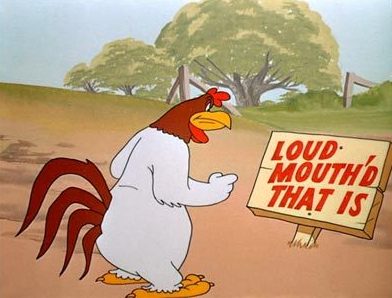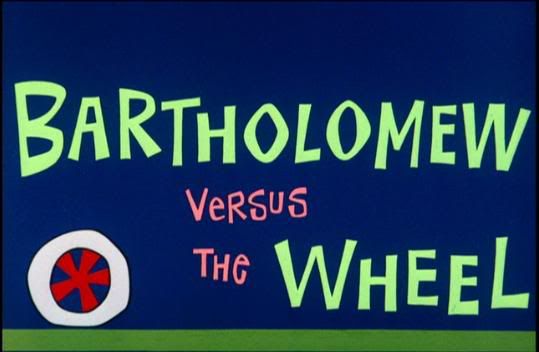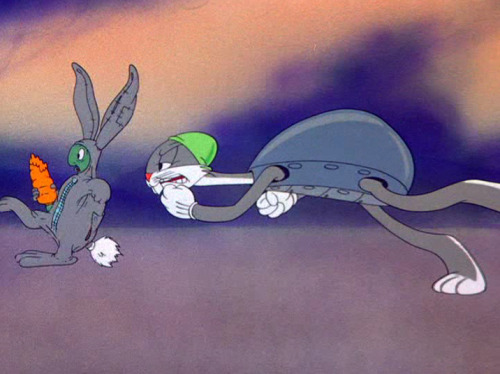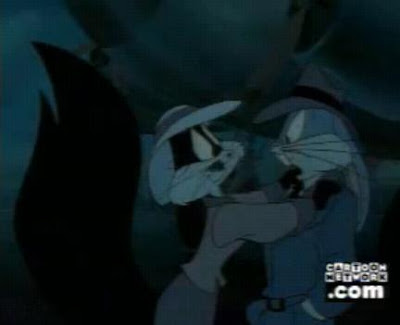
Title -
Herr Meets HareDirector - Friz Freleng
Released - 1945
Interesting Note -- First short to have Bugs realize he "should have made a left toin at Albukoykee."
Reason for Placement --
When WWII broke out, it's no surprise that animation studios around the country quickly rallied behind the armed forces. Warner Bros, Disney, and MGM, among others, produced dozens of cartoons that reflected either on the war overseas, or what civilians were doing back home to help their country, including rationing of food, collecting scrap metal, growing victory gardens, buying war bonds, you get the idea. Still, some cartoons actually put their characters right in the thick of it, and one of these was Herr Meets Hare.
Bugs takes the wrong turn at Albuquerque and ends up in Germany, facing Hermann Göring (for those in need a history lesson, Göring was a Nazi officer and Hitler's designated successor). Shocked, Bugs tries to make his escape before "Fatso" Göring delivers him to Hitler as a trophy. On a side note, this toon was released just a few months before the collapse of the Third Reich, and was one of the last war-themed toons to be released by Warner Bros.
This isn't a cartoon one sees very often, mostly because it was pulled from circulation, along with many other WWII-themed toons. The first time I saw it, I actually got a little freaked out during the scene where Bugs pretends to be Hitler so he can mess with Göring. I mean, Bugs Bunny, a treasured American icon, disguising himself as one of the most evil and hated men in history? I know that when this toon was made, it was more of a pop culture gag than anything else, but decades later, this moment honestly made my jaw drop.
One of the more notable scenes in this short shows Bugs dressing as a female viking, and dances with Göring. Sound familiar? Yep, this scene would later be retooled for Chuck Jones' What's Opera, Doc?
















































